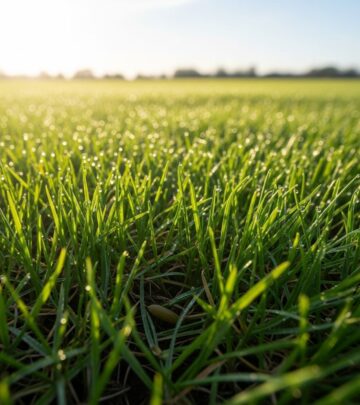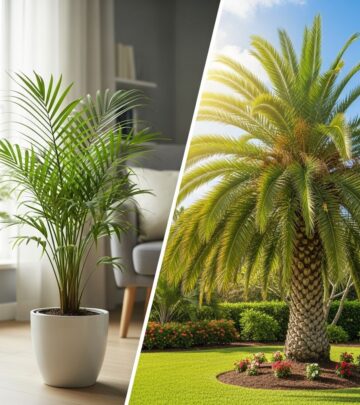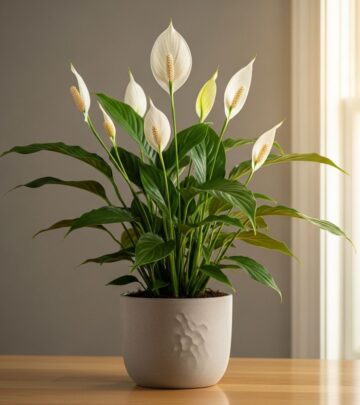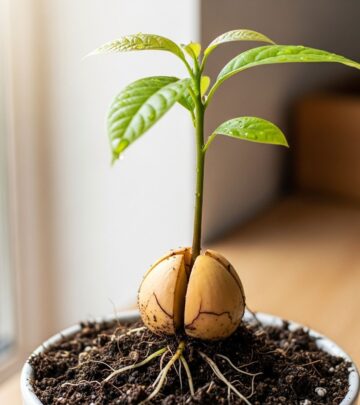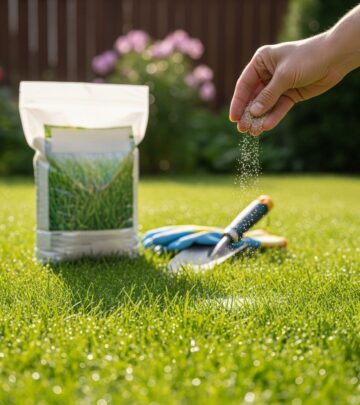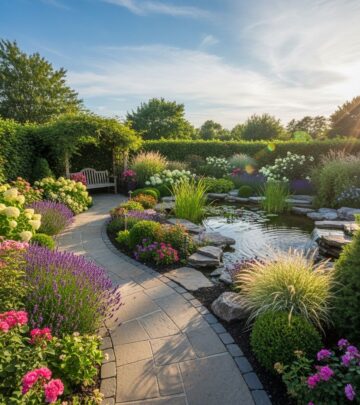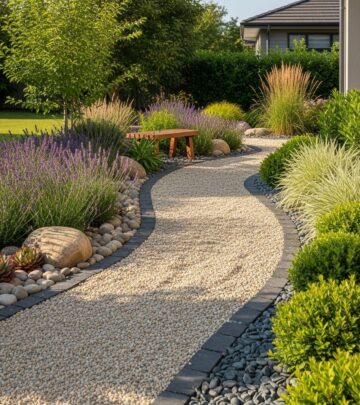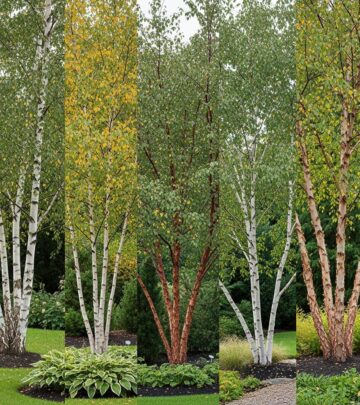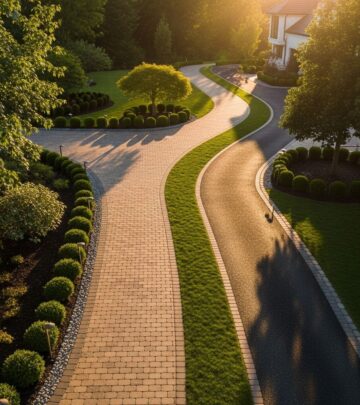Hardscaping 101: Pleached Trees and the Art of Pleaching
Elevates outdoor areas with green structures that blend formal lines and natural elegance.
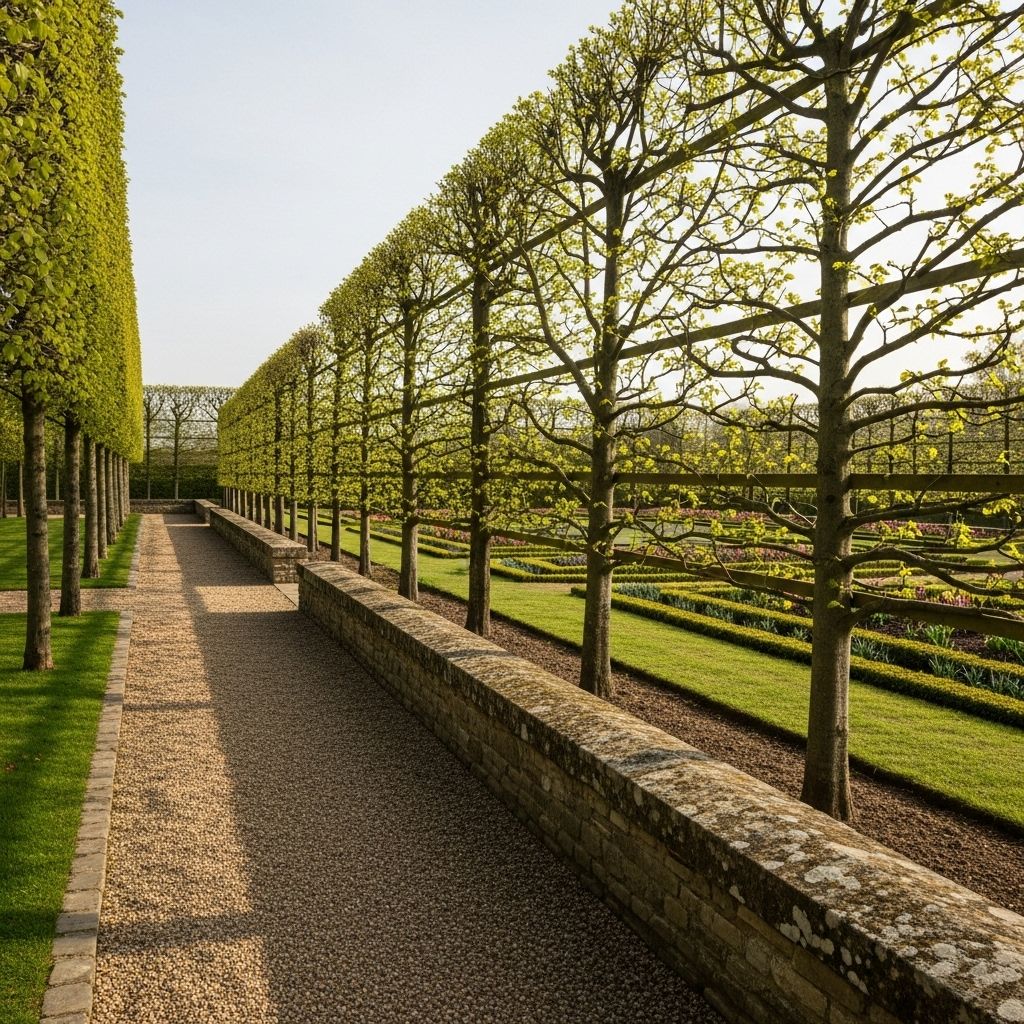
Image: HearthJunction Design Team
Pleaching is a centuries-old horticultural technique that brings both order and architectural drama to gardens. By training trees into linear, elevated planes, pleaching offers instant living screens, defines outdoor rooms, and adds vertical intrigue to landscapes. This guide delves into the essentials of pleached trees—what they are, how to use them, the best species for pleaching, planting and care tips, and frequently asked questions for aspiring and experienced gardeners alike.
What Is Pleaching?
Pleaching is the horticultural practice of training trees into flat, interwoven frameworks above their trunks, forming elevated green screens. This technique traditionally involves planting young trees in orderly rows, then pruning and weaving their flexible young branches horizontally along a supporting framework.
- Architectural Appeal: Pleached trees are prized for their stately, precise outlines and the sense of structure they impart to any garden.
- Historical Roots: The technique dates back centuries and has been used in formal European gardens to create shady walkways, allées, and privacy screens.
- Living Fences: Pleaching allows for the construction of living ‘walls,’ providing screening and a sense of enclosure without resorting to stone or timber.
Why Use Pleached Trees?
The use of pleached trees in modern gardens stems from their ability to introduce green structure, offer privacy, and form outdoor rooms without the permanence of solid hardscaping. Their advantages include:
- Defining garden ‘rooms’ and sections, especially in mid-sized and urban plots
- Providing screening and privacy from neighbors—ideal along boundaries
- Visual softness, as they add height without the harsh solidity of built walls
- Cost-effectiveness compared to constructing brick or timber boundaries
- A strong sense of formality and elegance—best suited for geometric garden layouts
Garden and landscape designers praise pleached trees as the ultimate green architectural feature. While they introduce disciplined order, they are more affordable and less domineering than walls, making them preferable in many situations—particularly urban spaces where height is needed without sacrificing light or causing claustrophobia.
How to Use Pleached Trees in Garden Design
Pleached trees are extremely versatile and can be incorporated into garden design in several impactful ways:
- Screening: Deploy pleached trees along property boundaries or adjacent to unsightly views to create instant green privacy.
- Outdoor Rooms: Use rows of pleached trees to define separate functional zones: dining areas, entertaining spaces, or tranquil retreats.
- Walkways and Allées: Create grand avenues by pleaching trees on either side of a path for a classic, formal effect.
- Height on Boundaries: Where a solid fence may feel confining, pleached trees extend the sense of enclosure up to two to three meters above ground with transparency and airflow.
When designing with pleached trees, keep in mind:
- Pleached trees excel in formal and geometric settings. While tempting, they can appear out of place in loose or naturalistic gardens.
- They are particularly suited for contemporary and traditional styles where structure and lines are celebrated.
- The base of the trunks remains unclipped, allowing for plantings below, paving, or open grass—versatility that hard fencing lacks.
Best Trees for Pleaching
Tree selection is crucial to successful pleaching. Choose:
- Young, pliable trees with very straight, upright trunks
- Species that respond well to pruning and shaping
Popular pleaching choices include:
| Common Name | Botanical Name | Notes |
|---|---|---|
| Hornbeam | Carpinus betulus | Resilient, lush summer foliage, holds leaves in winter |
| Linden/Lime | Tilia spp. | A classic choice; elegant, large leaves |
| European Beech | Fagus sylvatica | Dense foliage, coppery winter color |
| Fruit Trees (Apple, Pear, Crabapple) | Malus & Pyrus spp. | Flowering in spring, occasional fruit |
| Plane | Platanus spp. | Tough, large leaves, often used for avenues |
Whatever the species, ensure the tree’s branching structure is amenable to being woven or tied; those with whippy shoots are easier to manipulate. Nurseries may offer trees already started on frames, giving you a head start.
How to Plant and Care for Pleached Trees
Planting Pleached Trees
Proper planting establishes healthy growth and a stable pleached framework:
- Excavate a generous hole—twice the diameter and depth of the root ball.
- Carefully position the tree at the correct height, ensuring the root flare sits level with the soil surface.
- Backfill with enriched soil, pressing gently around the base.
- Apply a thick mulch of bark chips to suppress weeds and retain moisture.
- Water well, particularly during the first growing season or during dry spells.
- Staking: Support each tree securely, especially in exposed locations, to prevent wind damage.
Essential Aftercare
- Watering: Young pleached trees require consistent moisture until established.
- Weed Control: Maintain weed-free bases to reduce competition for nutrients and water.
- Buds: Rub off any unwanted buds along the trunk to maintain a clean stem.
Maintenance & Pruning
To keep pleached trees neat and promote dense foliage, follow this schedule:
- Summer: Light trimming to maintain the square or rectangular form and prevent excessive growth.
- Winter: Prune more thoroughly while trees are dormant. Reshape and refine the framework, removing any wayward or crowded shoots.
- Tying In: Weave or tie new, flexible shoots along the framework. Use natural twine to minimize bark damage.
- Frame Removal: As trees mature, their own branches will often graft together, allowing the supporting framework to be removed.
- Accessibility: Plant pleached trees with enough space to access both sides for pruning and tying.
How to Train Pleached Trees
Training is both an art and a science. When trees are young, their thin branches are supple and can be gradually shaped along a horizontal trellis or wire frame. To train pleached trees:
- Plant in a straight, evenly spaced row—distance will depend on the species and desired density.
- Insert a sturdy support structure at the required height—usually 6–8 feet for standard pleaching.
- Bend and tie loose shoots horizontally to the wires or trellis.
- Trim or remove any vertical or downward-growing branches.
- Continue weaving flexible branches each growing season; cutting back to encourage bushiness if needed.
Do not force branches to unnatural angles—they will break or weaken. Work with the natural vigor of the tree, and over time you’ll establish a thick, interlocking structure.
Benefits and Drawbacks of Pleached Trees
| Benefits | Drawbacks |
|---|---|
|
|
Popular Applications: Where Pleached Trees Shine
- Urban Gardens: Maximizing privacy and green screening on compact plots.
- Period Properties: Reinforcing the formality and historic appeal of classical architecture.
- Contemporary Designs: Adding bold, clean lines for a modern aesthetic.
- Large Estates: Creating dramatic allées and framing views toward focal points.
Expert Tips for Success
- Start with quality nursery stock: Buy pre-trained pleached specimens if instant impact is needed, or young saplings to shape yourself.
- Site selection is key: Most recommended species thrive in full sun or partial shade; check soil drainage requirements.
- Frame materials: Use rust-proof wire or treated timber for durability; ensure the framework is sturdy enough to support maturing branches.
- Long-term vision: Pleached trees are a long-term investment, becoming more impressive as they mature and their structures fuse naturally.
Frequently Asked Questions (FAQs)
What does ‘pleached’ mean?
To ‘pleach’ is to interweave living trees or branches into a flat, structured plane—usually around a supporting frame for architectural effect or screening.
Which species are best for pleaching?
Hornbeam, linden (lime), beech, and many fruit trees (such as apple, pear, and crabapple) excel due to their flexible shoots and tolerance of pruning.
How far apart should pleached trees be planted?
Spacing depends on species and intended density but generally ranges from 1.2 to 2.5 meters (4–8 feet) apart for most common trees.
Are pleached trees hard to maintain?
Maintenance includes twice-yearly pruning and occasional tying in of shoots, but the investment yields a striking, living feature. As the plants mature, less intervention is needed, especially once branches fuse and frames are removed.
Can I use pleached trees in a woodland or naturalistic garden?
While possible, pleached trees look most at home in formal or geometric layouts. They may appear at odds with relaxed, wild settings.
Do I need to buy ready-made pleached trees?
No; you can start with young saplings and train them yourself. However, ready-trained specimens offer instant results and are readily available from specialist nurseries.
Expert Resources and Further Reading
- Specialist suppliers like Majestic Trees and Insta Hedge (UK) or Raintree Nursery, Yamagami’s Nursery (US) offer a range of pleached and espaliered trees.
- Consult with a professional landscaper for bespoke garden designs involving pleached trees.
Conclusion: The Living Wall Reimagined
Pleached trees are more than a gardening fad—they represent the fusion of living material with human intention, crafting order and elegance from flexible young trees. Whether screening the neighbors, framing a pathway, or heightening a boundary, pleaching is a practical and beautiful solution that brings enduring structure and seasonal interest to gardens of various styles and sizes.
References
- https://www.gardenista.com/posts/gardening-101-pleaching/
- https://www.gardenista.com/posts/hardscaping-101-pleached-trees-pleaching/
- https://www.gardenista.com/web-stories/landscaping-101-pleached-trees-gardenista-xkvyn/
- https://www.pinterest.com/pin/pleached-hornbeam-and-beech-trees-a-guide-to-lush-foliage-and-ethereal-beauty–458874649519159314/
- https://www.pinterest.com/pin/hardscaping-101-pleaching-gardenista–203013895692465249/
Read full bio of Anjali Sayee

